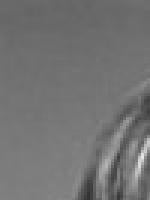This article is the eighth, and final, in a series summarizing construction law developments for 2010.
- Tverberg v. Fillner Construction, Inc., 49 Cal. 4th 518 (June 2010)
The peculiar risk doctrine is a judicially created exception to the common law rule that a person hiring an independent contractor to perform inherently dangerous work is generally not liable to third parties for injuries resulting from the work. Courts initially used the peculiar risk doctrine to impose upon landowners vicarious liability for the acts of their independent contractors when certain third parties – innocent bystanders or neighboring property owners – were injured by the contractors' work. It was not until courts expanded the doctrine to include another category of third parties, the employees of the independent contractors, that the Supreme Court stepped in to curtail the exception. In Privette v. Superior Court, 5 Cal. 4th 689 (1993), the Supreme Court held that a hirer of an independent contractor is not vicariously liable to the employees of the independent contractor for injuries caused by risks inherent in the work the contractor was hired to perform.
In Tverberg, the Supreme Court seized the opportunity to resolve a conflict within the Courts of Appeal regarding whether the hirer of an independent contract is vicariously liable to the contractor for the contractor's own injuries resulting from a risk inherent in the work. The Court of Appeal in Michael v. Denbeste Transportation, Inc., 137 Cal. App. 4th 1082 (2005) held that the hirer was not liable to the independent contractor for the contractor's own injuries, while the Court of Appeal in Tverberg reached the opposite conclusion. The Tverberg court reasoned that the justification for the Privette decision was the availability of workers compensation for the injured employee. Because workers compensation would not always be available to the independent contractor, the Court of Appeal in Tverberg concluded that the independent contractor could seek recovery for injuries from the hirer.
The California Supreme Court reversed the Court of Appeal and barred the independent contractor's claim against the hirer for injuries caused by the inherently dangerous jobsite conditions. The Supreme Court explained that the outcome in Privette and other decisions disallowing claims was not determined by the availability of workers compensation to the injured person. Instead, the analysis depended on the delegated responsibility for maintaining jobsite safety. A hired independent contractor who is injured by risks inherent in the hired work, after having assumed responsibility for all safety precautions reasonably necessary to perform the work safely, is not an innocent third party deserving of compensation under the peculiar risk doctrine. The doctrine of peculiar risk does not apply when the injured independent contractor seeks to hold a hirer vicariously liable for injuries caused by risks inherent in the work over which the independent contractor has been granted control.
- Miranda v. Bomel Construction Co., 187 Cal. App. 4th 1326 (4th Dist. July 2010)
The plaintiff worked in an office next to a vacant lot, which for several months was used as the location of an uncovered stockpile for dirt excavated from a nearby construction project. Plaintiff contracted Valley Fever and filed a complaint for negligence against the general contractor that created the stockpile. The plaintiff alleged the contractor failed to cover the stockpile or otherwise contain dust from it, and that fungal spores carrying the pathogens that caused Valley Fever were released from the excavated soil that the contractor had negligently stored. The contractor successfully moved for summary judgment on the ground the plaintiff could not establish that the contractor had proximately caused the plaintiff's injury.
The Court of Appeal affirmed. While plaintiff produced ample evidence that the fungal spores that cause Valley Fever are contained in dirt throughout Southern California, can become airborne, and can be inhaled after dirt is excavated, plaintiff had no evidence that dirt from the stockpile contained the fungal spores or was the source of plaintiff's exposure to the disease. While plaintiff could speculate that the dirt stockpile was the source of the fungal spores that caused him to contract Valley Fever, he could not produce evidence that the stockpile (rather than all the other sources of airborne dust in Southern California) was a substantial factor in causing the disease.




 />i
/>i
